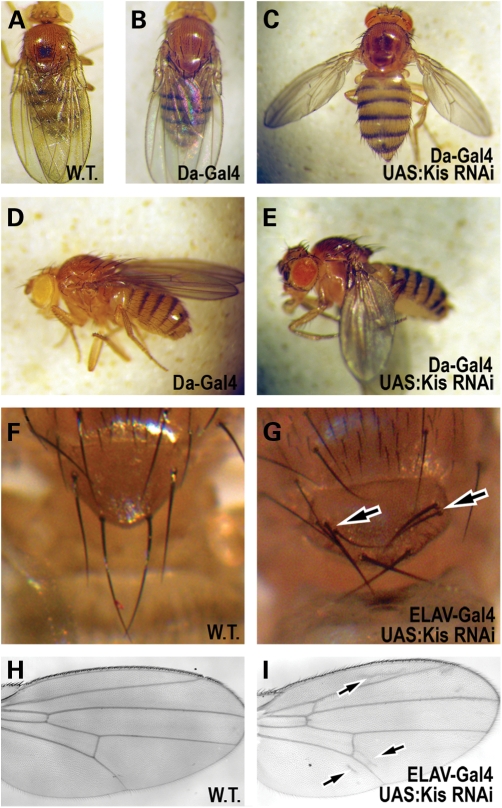Figure 1.
Adult phenotypes in Kismet knockdown flies. (A–E) Adult female flies. (A–C) Dorsal view. (D–E) Lateral view. (A) Wild-type (Canton S) fly. Note the position of the adult wings. (B and D) A fly expressing only the Daughterless-Gal4 reagent (Da-Gal4/ +) holds its wings normally. (C and E) A fly where Kis protein is ubiquitously knocked down (Da-Gal4/UAS:kis RNAi.a) holds its wings abnormally apart from its body. (F and G) Dorsal view of bristles on scutellum in (F) wild-type flies and (G) flies where Kis protein is knocked down in nervous tissue (Elav-Gal4/UAS:kis RNAi.a). Arrow notes duplication of bristles in Kis knockdown flies. (H and I) Adult wings from (H) wild-type and (I) Kis knockdown flies (Elav-Gal4/UAS:kis RNAi.a). Arrows denote presence of extra vein tissue near wing vein L2 (top arrow), the posterior crossvein (middle arrow) and wing vein L5 (bottom arrow). In cases not shown, Da-Gal4/+ and ELAV/+ flies show wild type phenotypes.

